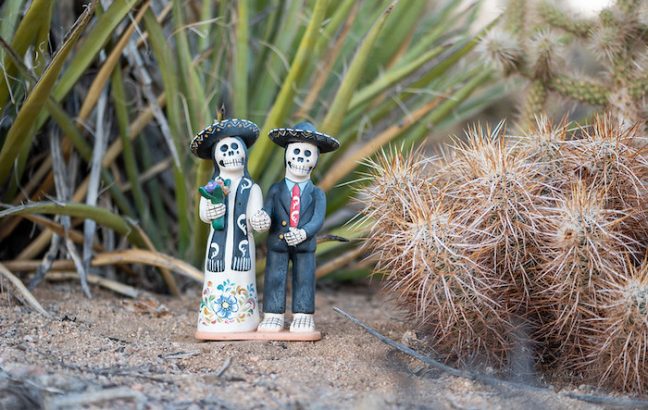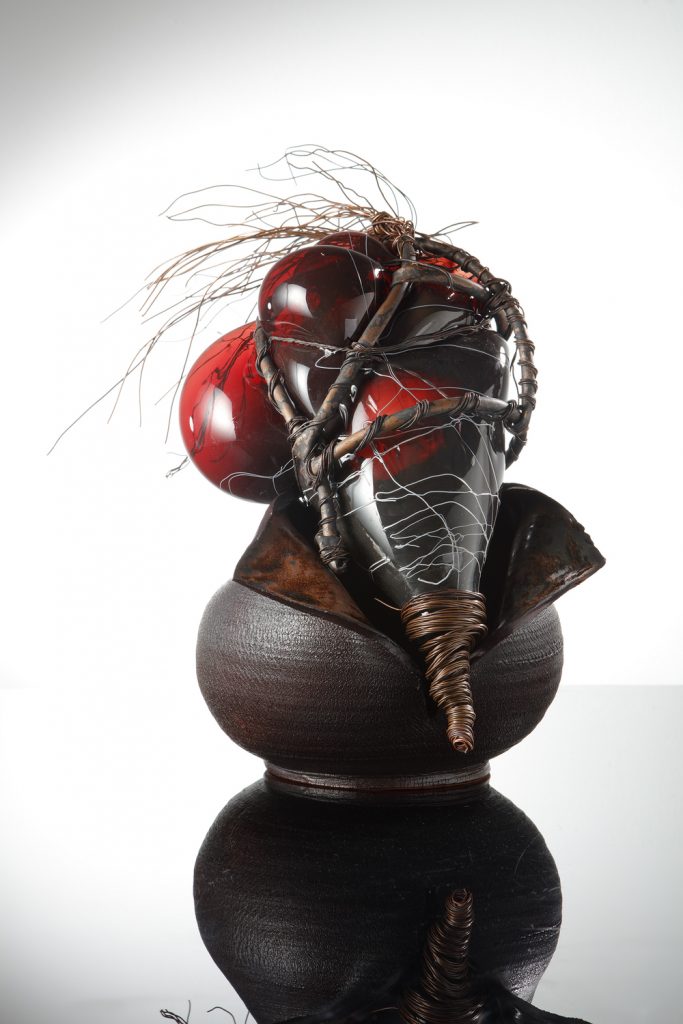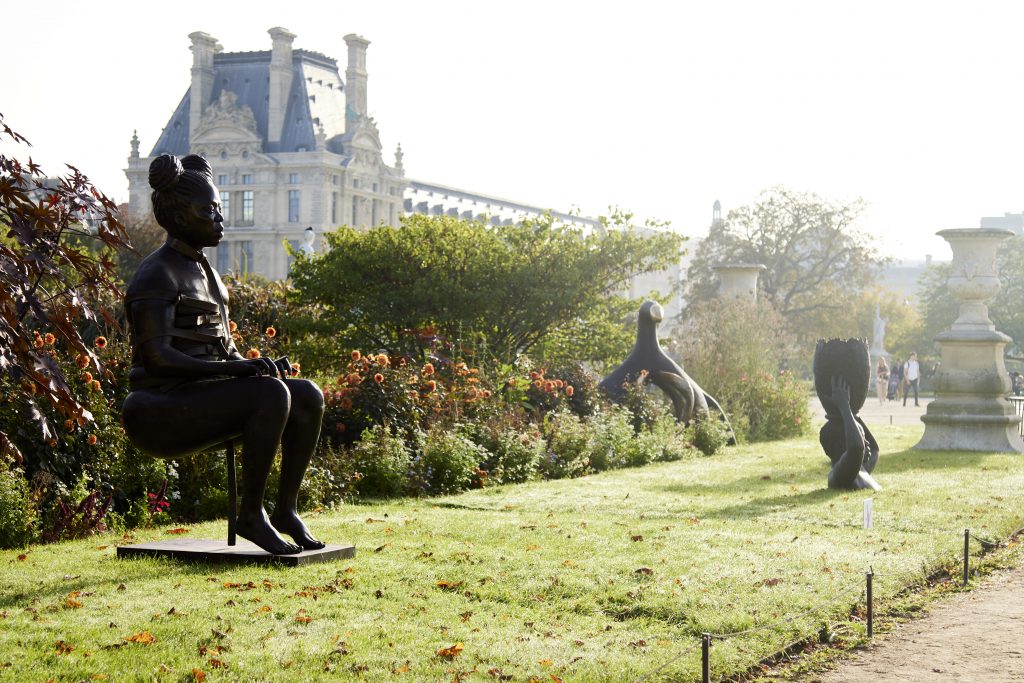Wieden+Kennedy are releasing The Brooklyn Way, a book that’s “a love letter to the New York borough”.
Cultrface – a blog dedicated to culture and how it enriches our lives.
Some links on Día de Muertos

Día de Muertos or “Day of the Dead” is a holiday celebrated predominately in Mexico and by people of Mexican heritage around the world. It takes place on 1st–2nd November, although it can stretch as far back as 31st October or as late as 6th November if you live in Yucatan.
The holiday commemorates the dead in a joyous way where people pay their respects in remembrance of the loved ones they have lost. No doubt you will have seen the famous traditions of Día de Muertos such as calaveras (edible or decorative skulls made from sugar or clay), cempazúchitl (a marigold flower native to Mexico), and home altars known as ofrendas.
I thought it’d be cool to post some interesting links on Día de Muertos and its various traditions so here they are:
Links
- Pop culture calaveras including Kermit the Frog, the Xenomorphs from Alien, and a LEGO figure’s head. Artist Mikel Yantz made some pop culture calaveras as well
- Building my Ofrenda –
Embodying ancestral knowledge in a scientific dystopia
- Arbol de la Vida (Tree of Life) to Celebrate Day of the Dead by Lola Wiarco Dweck
- Some thoughts on cultural appropriation on Día de Muertos (and how to avoid it) from Pop Sugar, People.com, The Conversation, and Refinery29
- Letterboxd movies lists to watch through during Día de Muertos
- 17 Traditional Foods To Try For Day Of The Dead and Guatemalan Fiambre For Day Of The Dead
- The symbols and traditions of Dia de los Muertos, from a semiotic perspective
- Day of the Dead Candle Magnets!
- Apparently, Día de Muertos watches are a thing too?
- 10 things to know about the Day of the Dead
- 10 Drop Dead Gorgeous Cakes For Día de los Muertos
- Literary Calaveras from the Smithsonian
- Sugar Skulls, Tamales And More: Why Is That Food On The Day Of The Dead Altar?
- ‘Coco’: How Pixar Brought Its “Day of the Dead” Story to Life
Perhaps that’s what all human relationship boil down to: Would you save my life? or would you take it?
A quote by Toni Morrison from ‘Song of Solomon’
Shout out to Chris Day, Britain’s only Black glassblower

As Black History Month in the UK is coming to a close, I wanted to give another shout out to a Black British person and that is Chris Day.
Chris Day is quite possibly Britain’s only Black glassblower (or “certainly the only one that the artist is aware of”). Growing up in the West Midlands, Day spent more than two decades as a plumber before embarking on a career in glassblowing. He has since created incredible works with glass and mixed media and always has Black history at the forefront of his mind and creations, particularly the plight of Black British and Black American people.
“Like the glass I have pushed my approach in how I work with glass and ceramics in both traditional and experimental methods, to create contemporary artworks that represent my passion for this part of our history. As a black glassblower, I am one of few and on a quest to find and inspire more. My main purpose, however, is to engage the audience on issues that are hard to confront on many levels, using art to help overcome some of the traumas that haunt our collective past”
Day’s work has been displayed at the V&A in London, UK, The National Museum of Scotland, The Chrysler Museum in Virginia, USA, and National Museum Wales to name a few and in 2020, he did an interview with the BBC on how Black Lives Matter has found a place in his work.
The eBook version of The Palestine Laboratory: How Israel Exports the Technology of Occupation Around the World by Antony Loewenstein is £8.00 to buy on Verso Books! Or you can get the hardback version for £15.19 and get the eBook version free as well.
Update: this used to say that the eBook version was free but this offer has now expired.
A 'Monkey-Themed Banana Holder' is at the centre of a racism row in Hutto, Texas
Previously on The USA is Not a Serious Country — A Monkey-Themed Banana Holder Is Tearing a Texas City Apart:
“I believe the mayor has some racist tendencies that I think should be really alarming to the citizens he claims to represent,” Brian Thompson, one of two Black members of the seven-seat Hutto council, told The Daily Beast last week.
Calderone insisted that her gift’s monkey theme had no racial implications. Snyder apologized for offending anyone but claimed he wasn’t even aware of the monkey trope, and insisted that he was not racist.
Sure, Jan. Who the hell has a banana holder? They do just fine on a table or in a bowl. And for a whole bunch? Grow up.
Turning banana stems into useful fibres in Uganda
Did you know that you could make fibres out of discarded banana stems that can be “softened to the level of cotton”? I didn’t until the other day, and it’s happening in Uganda.
Uganda has the highest banana consumption rate in the world and is Africa’s top producer.
In rural areas, bananas can contribute up to 25 percent of the daily calorie intake, according to figures from the U.N. Food and Agriculture Organization.
[…]
To harvest the crop, the stem must be decapitated, they’re often left to rot in open fields.
But local startup TEXFAD, which describes itself as a waste management group, is now taking advantage of this abundance of rotting stems to extract banana fibre that’s then turned into items such as hair extensions.
John Baptist Okello, TEXFAD’s business manager, says it makes sense in a country where farmers “are struggling a lot” and have tonnes of banana-related waste.
The company, which collaborates with seven different farmers’ groups in western Uganda, pays $2.7 (USD) per-kilogram of dried fibre.
Uses for these fibres include the making of hair extensions, lampshades, and rugs. Now that’s what I call recyclable waste!
Related: how fish skin is used for leather in Kenya and Kenyan art made from flip flops.
I am obsessed with Chef Tyler and his grilled cheeses
YouTube’s recommendation engine throws up all kinds of randomness when you watch enough videos of a certain type. Eventually, it decided to show me videos of some dude making grilled cheeses. And I watched more. And more. And now I’m obsessed.
The “dude” in question is called Chef Tyler, a lactose intolerant food photographer and grilled cheese connoisseur. Yes, you read that right: he’s lactose intolerant. So that means he has to try cheeses with minimal-to-no lactose in them (and I learned through his videos that there were a few, such as Muenster and Camembert with a 0–1.8% lactose range. Cheddar has 0–2.1% lactose range).
I haven’t had many grilled cheese in my life but having seen Chef Tyler’s, it has inspired me to search out different types of cheese and make my own. I hope to get a cheese pull as epic as his one day.
The enduring myths of Halloween poison candy in the US
For Atlas Obscura, Jennifer Byrne spoke to sociologist and “Halloween sadism” expert Joel Best about the enduring myths surrounding Halloween poison candy in the US. Since 1982, the fear of rat/ant poison in Halloween candy and razor blades in apples has caused a panic amongst parents and officials with the latter going as far as imposing jail time for offenders and hospitals offering free X-rays on seasonal treats (because radiation isn’t a problem, right?) But Best knows better:
“All I can say is I don’t know of a single case of a child killed by a Halloween poisoner,” says Best. “I’ve seen five news stories that attributed deaths to Halloween poisoning. In one case, it was the child’s own father, and the other four were all retracted.” […]
“My favorite story of this kind was the one where a kid had taken a bite out of a candy bar and said to his parents, ‘I think there’s ant poison on this candy bar,’” says Best. “So the candy bar got analyzed, and sure enough, there was ant poison on it, but it was on the end of the candy bar the kid hadn’t taken a bite from.” The child later admitted to having put the poison on the candy bar himself.
In a similar case, a child claiming that he’d found a pin in his Tootsie Roll led his parents to accuse a neighbor of the deed. After 20 years of no doubt awkward neighborhood interactions, the child, by then an adult, confessed to planting the pin himself.
I think the wildest story I read was an 8-year-old who died after eating a poisoned Pixy Stix. The culprit was his father who was “intent on collecting his son’s life insurance money”. I think that says a lot about where the dangers of unfounded moral panic really lie.
Halloween related (without the poison or razors): a mini Halloween post, Eva Marie’s Venom cosplay for Halloween, and awesome queer Halloween parties in Castro
Steve Harvey in an orange suit
That’s it. Just Steve Harvey in an orange suit. The clip is from Family Feud where people were the contestants were asked to name the top 6 things your friends dared you to eat as a kid.
I gotta say, I like the orange suit on him so props to his stylist and his tailor.
Related to Sartorial Steve: Steve Harvey, in a yellow suit, on getting fired
Instagram apparently added the word ‘terrorist’ to some Palestinian user bios and have now apologised. Firstly, what the hell? Secondly, as someone I follow on Bluesky said, where is the explanation on how and why this happened?
Some of these shots from the 2023 Nikon Small World Photomicrography Competition are phenomenal. Spoiler alert: the winning photo was a shot of an optic nerve. The close-up of a tarantula fang was also cool.
Zanele Muholi's 'The Politics of Black Silhouettes' exhibit in Paris

Zanele Muholi (they/them) is a South African artist and “visual activist” known for their critically acclaimed photography. Their work mainly focuses on race, sexuality, and gender, partocularly the lives of LGBTQIA South Africans.
In their latest exhibition, The Politics of Black Silhouettes, Muholi taps into that Black queer community with the help of bronze statues:
Part of Paris + par Art Basel, Muholi’s The Politics of Black Silhouettes encompasses a series of figurative works positioned alongside statues by art historical greats like Auguste Rodin and Alberto Giacometti. While the previously installed sculptures are often presented on pedestals in stately positions, Muholi’s rest directly on the ground, exploring notions of value and reverence. One work depicts a figure sleeping softly on their side, while another shows a subject bound to a chair with belt-like restraints, their hands and feet anxious to move. The artist’s intent is corrective and “to rewrite a Black queer and trans visual history of South Africa for the world to know of our resistance and existence at the height of hate crimes in South Africa and beyond.”
via Colossal
The Politics of Black Silhouettes is available to view until 31st October so if you’re in or around Paris for the next couple of weeks or fancy a culture break, here’s some inspiration.
Pepper X is now the world's hottest pepper
Pepper X is now officially the hottest chili pepper in the world, according to Guinness World Records. It’s a small, yellow-green pepper and measures an average of 2.693 million Scoville Heat Units (SHUs), beating the classic Carolina Reaper, which averaged 1.64 million SHUs. And the creator of both? Ed Currie. The founder of PuckerButt Pepper Company also appeared on Hot Ones to get his Guinness World Records award and now I’m thinking there should be a Hot Ones award too.
Sidenote: what is it with things being called X this year? Come up with a decent name, please!
(via NPR)
Blue Monday Press have written a MF DOOM cookbook. I’ve started getting into cooking a lot more in the last few months so this would be perfect for me. And I love DOOM.